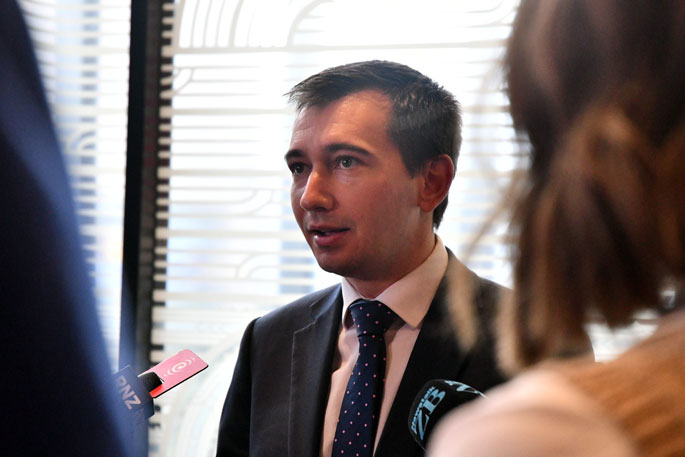Rotorua’s mayor says she is “extremely concerned” the district’s roading needs are going unfunded in favour of larger cities.
Tania Tapsell says this is despite 20% of the Bay of Plenty’s population living in the district, and the economic contribution it makes.
“Rotorua seems to keep missing out.”
Tapsell made the comments at an Infrastructure and Environment Committee meeting on Wednesday during a NZ Transport Agency Waka Kotahi presentation.
A total of $1.9 billion was forecast to be invested in the Bay of Plenty in the 2024-27 National Land Transport Programme (NLTP).
It’s this pie the mayor believes Rotorua is not getting a fair slice of.
“We are extremely concerned we make up 20% of the region’s population but we’ve essentially been allocated nothing.”
Her worry was “bigger cities” sucked up the funding available for the region, with smaller towns missing out.
“I just wonder if there is any reason why equity is not being considered across the region in this case.”
She said Rotorua contributed significantly to the region’s gross domestic product.
“We have continuously noted our disappointment that the areas of Waipa and the airport, that are primed and ready to go for economic development, have still not been supported.”
Tapsell said when plans for a new congestion-easing Rotorua Eastern Arterial route were dropped in 2016, it was understood NZTA would upgrade the existing routes instead.
Then-NZTA regional director Harry Wilson said at the time it would work with the council to identify future improvements such as more four-laning and projects to separate state highway and local road traffic as Rotorua grew.
“For now, we plan to start work on the initial $24 million roading package which will focus on the eastern and central corridors with an upgrade to State Highway 30 / Te Ngae Rd.”
Improvements to SH30 in the 2021-2024 national programme included $58m for stage one and phase one of stage two of the eastern corridor.
Tapsell noted the importance of this highway in a letter to Transport Minister Simeon Brown and NZTA board chairman Simon Bridges in August.
“The One Network Road Classification (ONRC) classes it as a Regional State Highway, which means it is a road that makes a major contribution to the social and economic wellbeing of the region, and connects regionally significant places, industries, ports/airports and neighbouring regions.
“The corridor provides an increasingly important tourism function.”
 Rotorua Mayor Tania Tapsell says smaller towns missed out in transport funding. Photo / Laura Smith.
Rotorua Mayor Tania Tapsell says smaller towns missed out in transport funding. Photo / Laura Smith.
Her letter said the council expected its top three priorities – SH30 stage two, phase two; SH30a revocation and SH5/Malfroy intersection – be “given favourable consideration and funding will be allocated to progress these State Highway improvements”.
Later stages of the State Highway 30 upgrades were being rescoped for cost increases. The focus was on the Wharenui Rd intersection, including improving safety and capacity. The central corridor – Amohau St – did not get any funding in the 2024-2027 national programme.
In the Wednesday meeting, Tapsell said she appreciated new priorities were set, but “it seems Rotorua is continuing to miss out despite what was certainly perceived as promises of investment based on those decisions”.
NZTA regional relationships director David Speirs outlined how Government policy and priorities shaped what money was spent where.
These priorities included economic growth and productivity, safety, value for money including whole-of-life costs and increased maintenance and resilience.
Speirs said the prioritisation process was not population-based.
Large-scale investments such as Tauranga’s SH29, Tauriko and Takitimu North Link projects “account for a very significant portion of that $1.9b”.
Stages one and two of the Takitimu project – a new highway between Tauranga and Ōmokoroa – made up almost $1b of it, he said.
Projects seeking funding in the region totalled about $5b.
“Tauranga wanted five very large pieces of infrastructure, they got one.”
Maintenance and operation costs “reflect the needs across the region”, however.
“That accounts for almost all of the rest.”
There would be 52.5 lane-km of resurfacing in eastern Bay of Plenty and Rotorua, and 9.2 lane-km of lane rehabilitation.
He said while only one or two of these large-scale projects could be funded during each work programme period, he took her population-based allocation point.
“It doesn’t work that way.”
Her concerns on priorities were for conversations with the ministry, not NZTA as the delivery agency, he said.
“They are very large, very political conversations I would encourage you to be having with your members.”
Tauranga and Western Bay of Plenty’s mayors last month spoke favourably of the region’s allocation.
Western Bay of Plenty Mayor James Denyer welcomed the large project funding but said there would be significant implications for the low-cost, low-risk projects in the district that the Government removed funding for.
Brown was approached for comment.
 Local Government and Transport Minister Simeon Brown. Photo / Laura Smith.
Local Government and Transport Minister Simeon Brown. Photo / Laura Smith.
LDR is local body journalism co-funded by RNZ and NZ On Air.




1 comment
The Master
Posted on 07-10-2024 16:40 | By Ian Stevenson
maybe Rotorua has already had its funding and some.
The Gloss of Rotorua is not now what it was, especially the state of the motels along Fenton Street and the huge levels of crime present.
Leave a Comment
You must be logged in to make a comment.